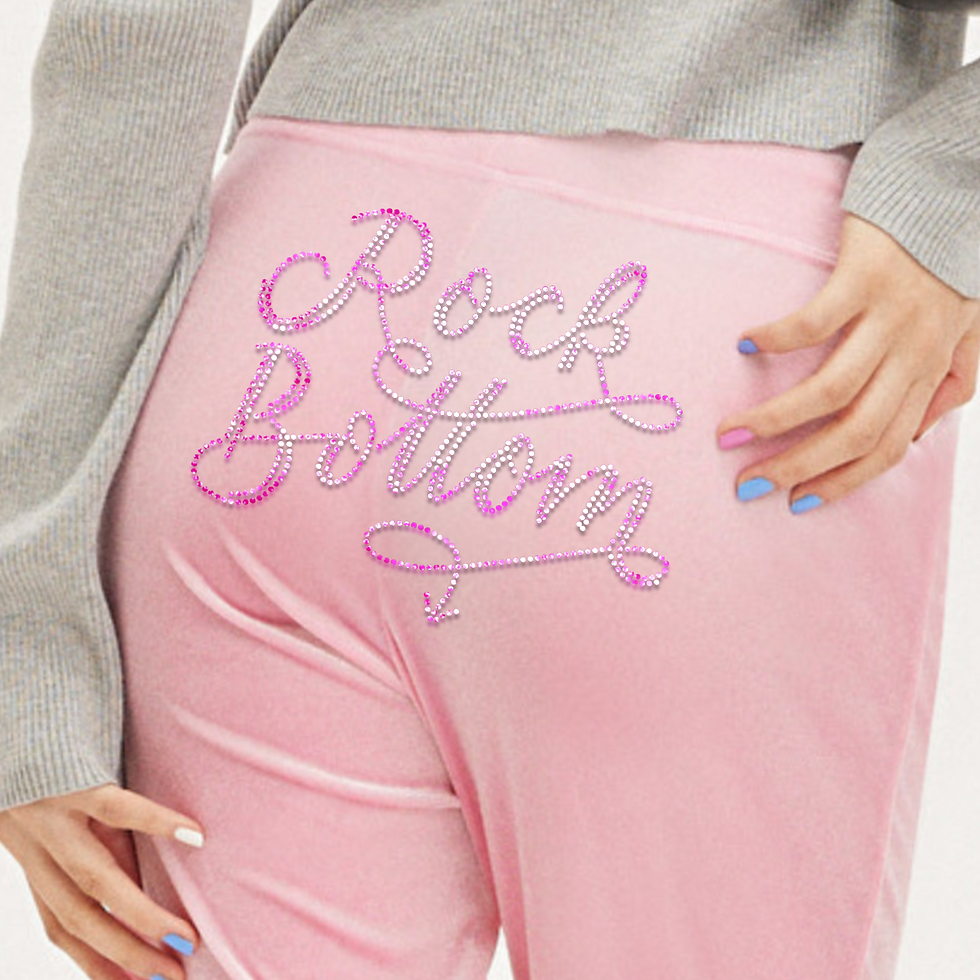- 31200209
- Jan 18, 2024
Updated: Feb 2, 2024
I sketched this idea on my iPad, it is an ironic and humorous take on the famous Juicy Couture joggers that have Juicy written on the backside. They have been copied by so many brands.
What if I was to glue rhinestones on to a pair of trousers with Rock Bottom written over the bottom.
It is both literal, but ironic. The diamonds and baby pink would usually be associated with a sexiness, highlighting the wearer's booty. But instead it says Rock Bottom. It is funny, ironic, and quite ridiculous. They would play into the Sad Clown Paradox that I have researched. Is the wearer trying to make people laugh, but actually double bluffing because they feel depressed? Is it a fashionable cry for help? Could we go so far as to wear our emotions like branding on clothes?
I did actually purchase diamantes and glue but ran out of time to make this! Perhaps an opportunity in my next project.

















